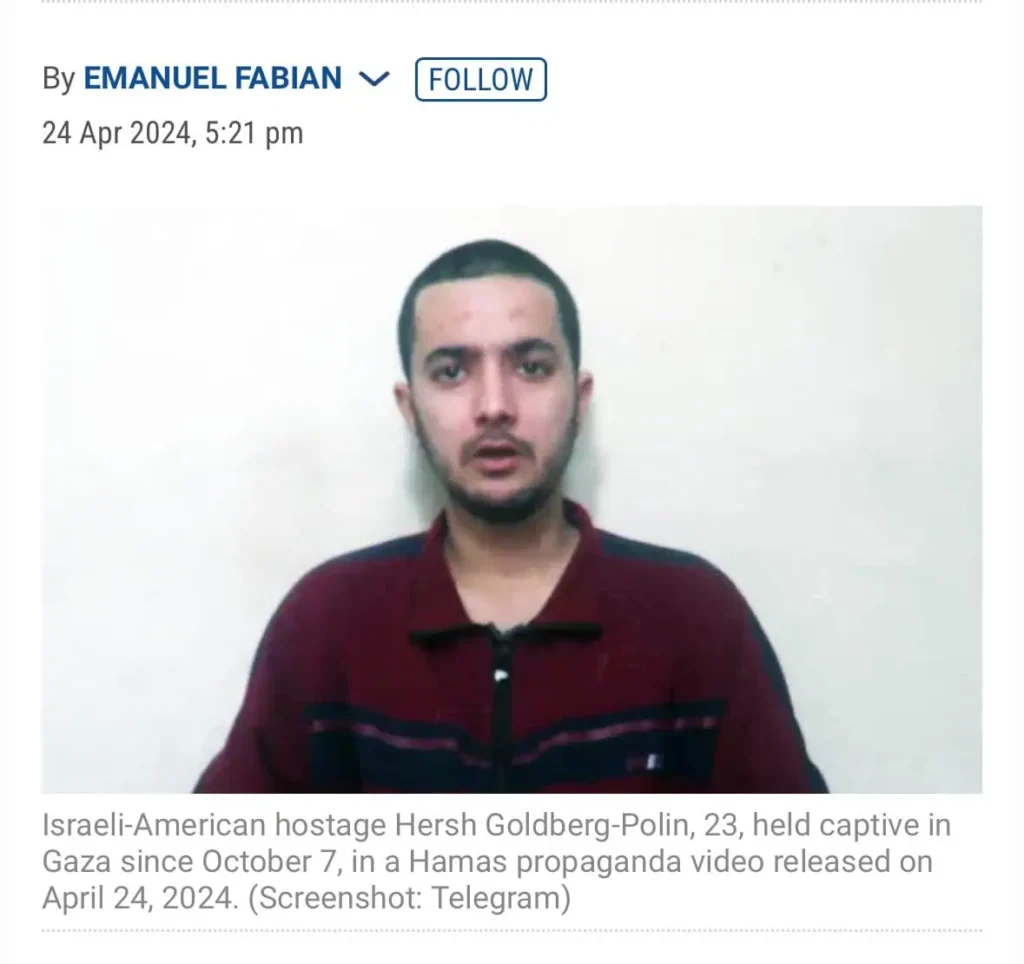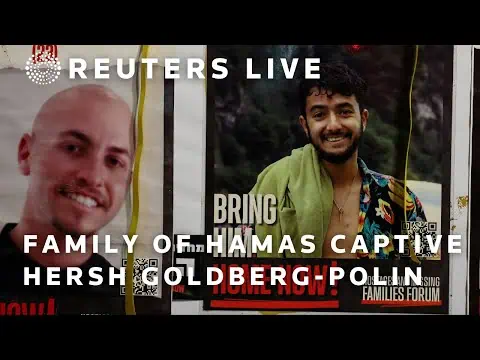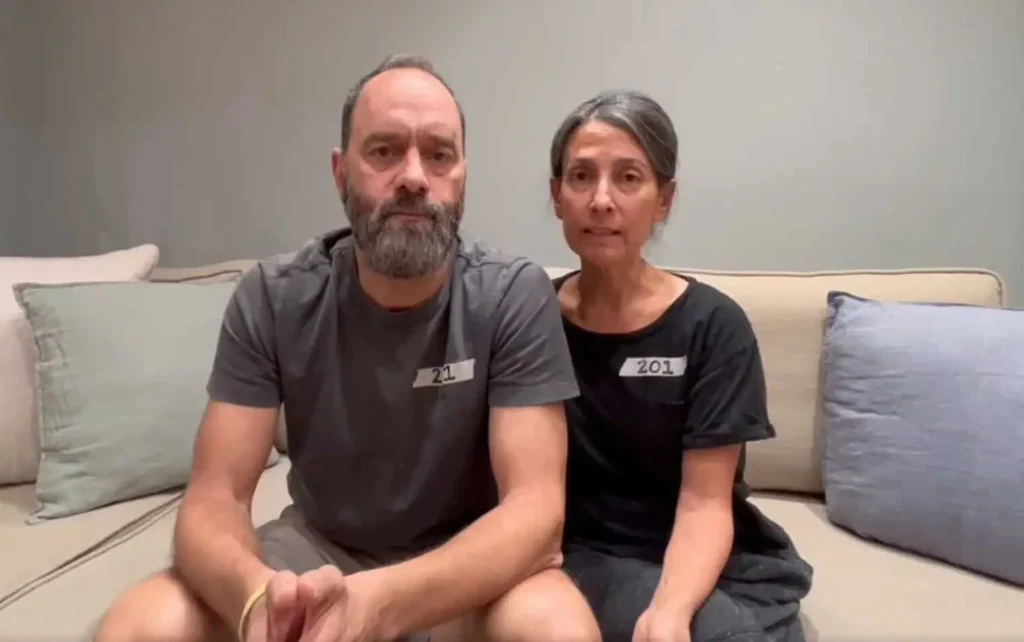Hersh Goldberg Video by Hamas
Contents
Explore the implications of the latest Hersh Goldberg Video released by Hamas showing captives and calling for an exchange, igniting a complex debate on international relations and humanitarian crises.
Hersh Goldberg Video

The release of the video by Hamas depicting Hersh Goldberg-Polin, an Israeli-American captive, has significantly affected Israeli public opinion. The stark images of Goldberg-Polin and his plea have intensified the urgency felt by the Israeli public for their government to act. Such incidents often lead to increased pressure on political leaders to prioritize the release of captives, sometimes at the expense of long-standing policies against negotiating with hostage-takers. The emotional weight of the situation can sway public sentiment and, consequently, influence government action to consider potential prisoner swaps or other forms of negotiation to secure the safe return of captives.
In the days following the video’s release, protests erupted across Israel, demonstrating the powerful impact that such personal and distressing appeals can have. The Israeli government, under scrutiny, must balance the immediate humanitarian need to bring captives home against wider security implications. This challenge is compounded by the political landscape and public expectations, which can be both a catalyst for swift resolution and a constraint on the range of acceptable diplomatic responses.
Analyzing the Role of International Mediators in Negotiating Captive Exchanges
International mediators, such as Qatar, play a pivotal role in facilitating dialogue between entities like Hamas and the Israeli government. The recent transfer of the Hersh Goldberg Video to the United States and Israel by Qatar underscores the nuanced task of these mediators, who must navigate the complex geopolitical terrain to broker a potential exchange. Their role often involves a delicate balance of maintaining confidentiality, building trust, and applying diplomatic pressure to ensure that negotiations move forward while mitigating the risks of escalation.
The involvement of high-profile figures from the US administration, including phone calls by the Qatari Prime Minister to US Secretary of State Antony Blinken and senior White House officials, highlights the significant international stakes and the diplomatic weight such situations carry. The effectiveness of these mediators is measured by their ability to bring about a resolution that satisfies the immediate humanitarian concerns while also considering the long-term implications for regional stability and international relations.
Understanding the Humanitarian Crisis Behind Captive Taking

The act of taking captives, as seen in the recent Hamas video, is not only a political maneuver but also a stark representation of the humanitarian crises that often accompany conflict zones. Captives are individuals caught in the crossfire, and their plight reflects the broader human suffering that occurs during prolonged conflicts. The conditions they endure, the loss of personal freedom, and the psychological toll are emblematic of the larger human rights violations that can occur.
When captives are used as bargaining chips, it further complicates the crisis by intertwining human lives with political objectives. The call for their release becomes a humanitarian imperative that transcends political affiliations and necessitates a response grounded in preserving human dignity and upholding international humanitarian law.
Examining the Political Ramifications of the Captive Exchange Demand
Demands for captive exchanges are fraught with political ramifications that can reverberate beyond the immediate situation. Such demands can set precedents for future negotiations, influence the behavior of militant groups, and impact the political capital of leaders involved in the decision-making process. For Israel, engaging in prisoner swaps with groups like Hamas may be seen as a concession that could potentially embolden its adversaries, a risk that must be weighed against the imperative to recover its citizens.

Political leaders must consider the long-term strategic implications, such as the potential for increased hostage-taking or the message it sends to other militant organizations. The decision to enter into negotiations can also reflect on the government’s commitment to its citizens and its stance on counter-terrorism, which can have lasting effects on its domestic and international political standing.
The Role of Media in Shaping Public Perception of the Crisis
The media plays a crucial role in shaping public perception of crisis situations, such as the captivity of individuals in conflict zones. The dissemination of videos like the one released by Hamas influences the narrative and can generate a sense of urgency or outrage among the public. Media coverage can mobilize support for the captives, apply pressure on governments to act, and bring international attention to the crisis.
However, it is essential for the media to approach such coverage with care, as the captives are not in a position to speak freely, and the content is often heavily controlled by their captors. The media must navigate the fine line between raising awareness and inadvertently becoming a tool for propaganda. Responsible reporting involves contextualizing the captives’ statements, analyzing the motivations behind their release, and considering the broader implications of the crisis.
READ ALSO NOW: Johnny Ricks Mcdonald’s Video



